His first production was the original “Tomb Raider”. Since then, he contributed screen graphics and fantasy UIs to productions such as “The Bourne Supremacy”, “Spy Game”, “Terminator 3”, “Thunderbirds”, “Quantum of Solace”, “Prometheus” and the last season of “24”. And for his latest project, he was the creative supervisor overseeing hundreds of screens in multiple locations on the latest installment in the Bond universe, “Spectre”. It gives me great pleasure to welcome John Hill of Vincent Studio to the ongoing series of interviews on fantasy user interfaces.
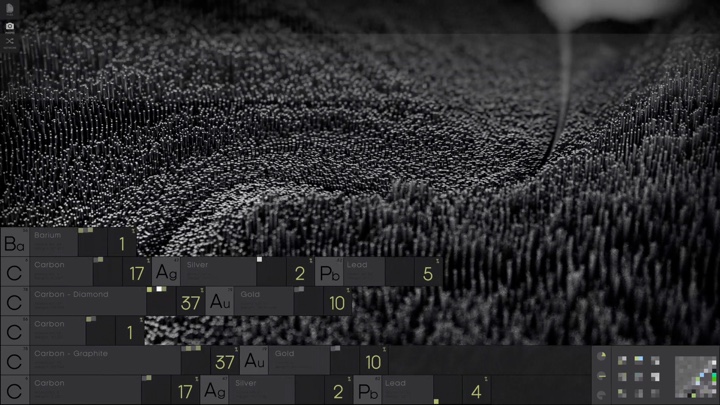
Screen graphics for Q’s workshop in “Spectre”. Courtesy of John Hill and Vincent studio.
Kirill: Please tell us about yourself and your path so far
John: I initially studied fine art and painting, focusing more towards graphic art during my foundation art course (the course tutor highlighted the long term plights of becoming a fine artist). I did a degree in Graphic Arts and then started to freelance in central London. I then worked at a small company designing club & venue visuals, where I learnt 2D animation.
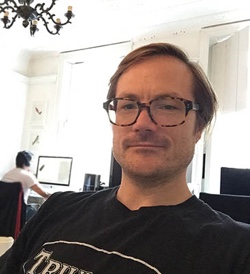 I then was asked to work at a company in Pinewood Studios designing computer graphics for film sets. My first feature was the first “Tomb Raider” film where I was asked to design the POV shots for the robot fight scenes in the opening of the film and then the title sequence, which was really exciting for me back then. I remember waiting 15 minutes for my G4 to update each frame in AE. I stayed on working full time in Pinewood for the following 2/3 years at Useful Companies working on most of the action films that came into Pinewood and Shepperton studios like “The Bourne Supremacy”, “Spy Games”, “Thunderbirds”, “Terminator 3” and others, designing UI graphics, shooting onset video and doing live playback.
I then was asked to work at a company in Pinewood Studios designing computer graphics for film sets. My first feature was the first “Tomb Raider” film where I was asked to design the POV shots for the robot fight scenes in the opening of the film and then the title sequence, which was really exciting for me back then. I remember waiting 15 minutes for my G4 to update each frame in AE. I stayed on working full time in Pinewood for the following 2/3 years at Useful Companies working on most of the action films that came into Pinewood and Shepperton studios like “The Bourne Supremacy”, “Spy Games”, “Thunderbirds”, “Terminator 3” and others, designing UI graphics, shooting onset video and doing live playback.
I then worried about becoming too focused on UI graphics and wanted to broaden my horizons a little, so I decided to go freelance and started working at various studios around London before setting up Vincent. I continued working on films like “GeForce”, “Quantum of Solace”, “Prometheus” and “Spectre” whilst doing motion graphics and VFX projects.
Kirill: What can you tell us about Vincent studio?
John: We creatively direct, design, animate for film, gaming, commercials, broadcast and live events. We also do on-set supervision for playback and VFX post production work. We called ourselves Vincent simply because we quite liked the name and its ambiguity. I run the studio and co-direct projects with Rheea Aranha.
Kirill: What drew you into the field of designing for feature films, and how has that changed since you’ve started working professionally in it?
John: I stumbled across it to be honest… I was’t getting much out the job I was in at the time working, so a friend working on a Bond film introduced me to Useful Companies who offered me a job as their art director, so I moved. Back then UI GX and video playback for films was not particularly well respected or deemed very important in the film making process… even though we were often relied on to bridge storylines in scripts and make key story telling moments. It was still a relatively new department in film… especially UI and computer GX. Most directors and productions designers were getting their heads around using computer GX for set design and story telling as it inevitably became part of current technology and everyday life.
Kirill: Your work spans a wide diversity of projects. When you meet a new person and they ask you what you do for a living, how do you describe it?
John: This is always a bit of a weird moment for me. I never really know how to sum up what I do in a singular job role and tend to waffle on about various projects and films I’ve worked on… I usually end up saying I’m a creative director, but I’m really a visual artist looking at any form/medium to tell a story in the most clear and interesting way. I’ve found over the years I can learn most new programs or disciplines like live action shooting/directing and post production/VFX fairly quickly… although it’s not getting any easier, I must say! I’m very hands on.
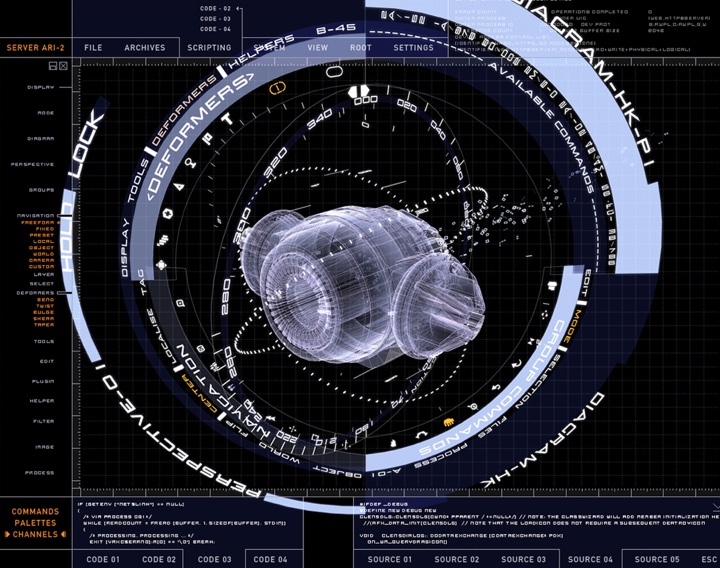
Screen graphics for “Terminator 3”. Courtesy of John Hill and Vincent studio.
Kirill: If you look back at the work you did for Terminator 3, how much has your field has changed in the last decade? Do you expect the scope and intricacy of your work to continue evolving at a similar pace in the next decade?
John: I think the world of UI GX has changed considerably in the past 15 years. It is now an intricate part of many sci-fi and current day films, providing unique storytelling moments and is a great fabric to dress and light film sets, as well as a great asset to play with in post-production.
Way more time is invested by film directors and productions to create beautiful graphics and UI VFX as they not only look great but are fantastic at telling complicated stories cost effectively. It will continue to evolve at an exponential pace, I think.

Screen graphics for “24”. Courtesy of John Hill and Vincent studio.
Continue reading »
Why are we seeing more screen graphics in TV shows these days? And why are those graphics almost always blue? Should we expect realism in how technology and user interfaces are portrayed in film and TV? Augmented and virtual reality – what can they be good for in our everyday lives? Is the technology around us evolving too fast and leaving too many people behind?
It gives me great pleasure to welcome Corey Bramall (aka Decca Digital) back to the ongoing series of interviews with designers and artists that bring user interfaces and graphics to film and TV screens. In our first interview we talked about his work on “Thor”, “Captain America: The Winter Soldier” and “Transformers”. Since then Corey has been busy at work on “Wayward Pines”, “Extant”, “The 5th Wave”, “Ant-Man” and, most recently, “Teenage Mutant Ninja Turtles 2” and “Captain America: Civil War”. As we talk about the topics mentioned in the opening paragraph and his recent work, we also discuss “Black Mirror”, “Ex Machina” and “Her”, and consider whether those fall under the realm of fantasy user interfaces.
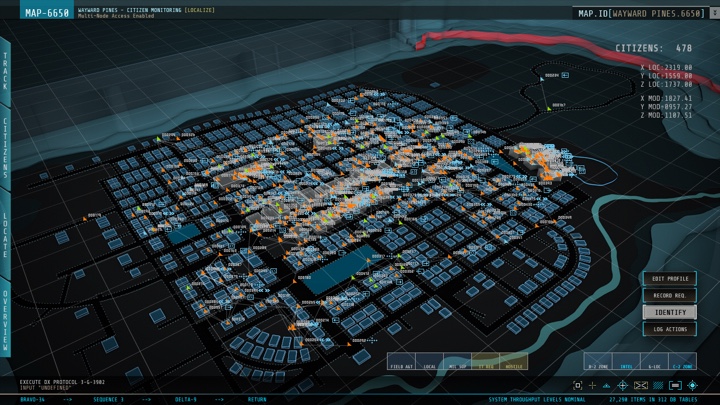
Screen graphics for Wayward Pines, courtesy of Corey Bramall.
Kirill: Let’s start by talking about the work you did for “Wayward Pines”.
Corey: We did the first season on that show. It was an interesting project, something that Fox has called “New Mystery Series”. It was only ten episodes, and it was nice. Each episode had a bigger budget, which adds almost like a movie quality to the show, and I thought it looked really good.
We did most of the bunker graphics which occurred later in the show. They didn’t reveal it until near the end of the first season. It was kind of an odd project where we did our work near the end. We were allowed to do almost whatever we wanted on it, which was nice.
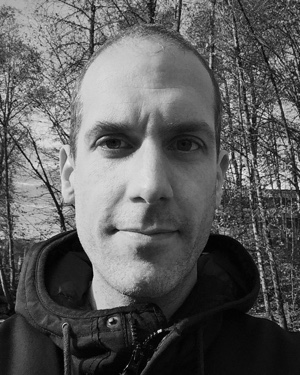 Kirill: Without revealing too many details, what I found interesting about the show was that while the story is set in the future, the technology comes from our present days.
Kirill: Without revealing too many details, what I found interesting about the show was that while the story is set in the future, the technology comes from our present days.
Corey: Without too many spoilers, they’re taking people from the present and cryogenically preserve them, but the computer technology can’t evolve. There are only so many people that have made it, so they wouldn’t have too many new pieces of technology or graphic design. It looked pretty real-world.
Kirill: How’s the pace of work on television? Do you work on the entire season, or is it one episode at a time?
Corey: It used to be one episode at a time, but nowadays they’re shooting two at the same time. If there’s a set with computers in it on both episodes, they’ll schedule the shots back to back so that they don’t have to move the crew. It gets confusing sometimes [laughs]. You’re making stuff for an episode, and halfway through it you’re making something for the next one.
It’s also usually a short shoot, six to eight days. It used to be a lot longer, maybe ten days for an episode five years ago.
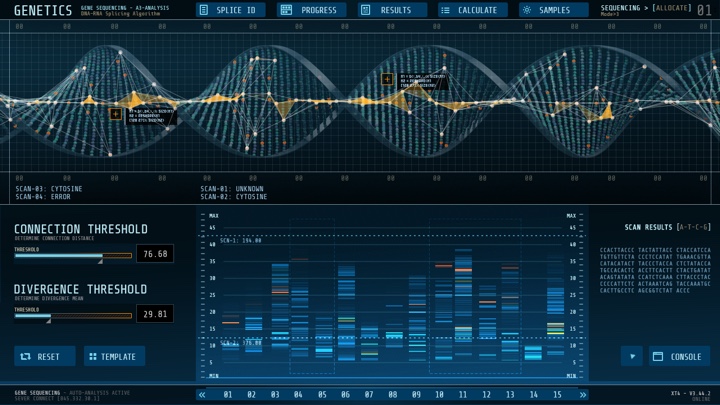
Screen graphics for Wayward Pines, courtesy of Corey Bramall.
Kirill: Do you do on-set playback sequences, or post-production?
Corey: For television it’s almost always on-set playback. I don’t go to set; I’m lucky to just stay in my office and design, while other people go to set.
I’ll get a script, and the breakdown of the scenes that we need for it from the show’s coordinator. I go through the list of things that I need to create, I do that and I give that back to them. Then another person go to set and they have to set up the computer, to make sure that everything functions technically. I don’t have to deal with that. It’s kind of nice [laughs].
Kirill: You mentioned that this show has an almost cinematic quality to it, and I guess that goes for a lot of TV drama these days, especially for higher-end productions that do “only” 10-12 episodes per season. Would you say that it requires the same attention to detail and sophistication of the work you’re doing if you compare it to feature films?
Corey: It is now. And that’s especially true for medical sets on television. They’ll have a medical tech there checking to see that the stuff you create is accurate. The only used to do that on film, because they have bigger budgets, but you see a lot of that on TV shows now. You have to be a lot more careful [laughs] about what you’re making. You can’t just wing it. You have to do better research. So that’s getting a lot more similar to film.
And then there’s also the quality. The gap between television and film is so small now.
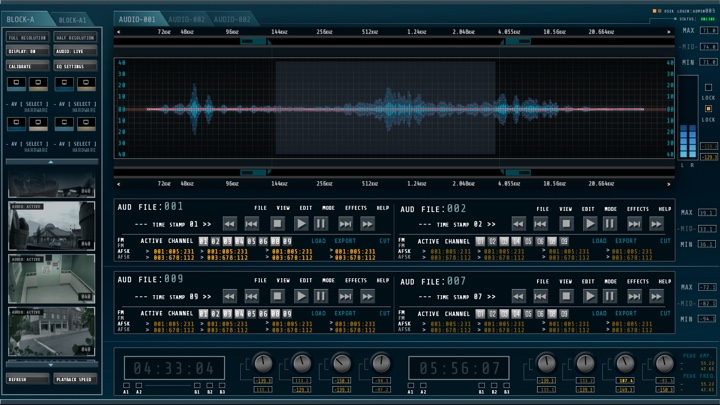
Screen graphics for Wayward Pines, courtesy of Corey Bramall.
Kirill: It’s just a slightly different form of storytelling, where film studios are creating franchise universes that evolve throughout multiple films, and TV shows are exploring very tightly scripted arcs.
Corey: I think it’s also a symptom of hardware being so cheap. If a production needs a couple of 70″ monitors, for example, they can just go and buy them. That’s available and not expensive, whereas before it was a big deal to add such large monitors. Not everybody could afford that, and there just weren’t that many.
Often now you build graphics for a set on a TV show, and they keep on adding monitors and need content for those. It’s similar to the world of feature film – they’ll do what is right visually, as opposed what is right for the budget. Five monitors is not that big of a deal anymore, but there’s that much more content to make. On a film it’s pretty typical to have 20-30 monitors on a set, but that used to never occur on TV sets. You see it often now, which is great.
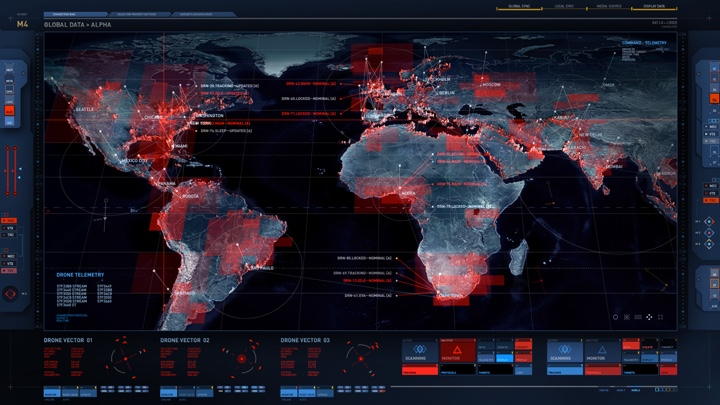
Screen graphics for The 5th Wave, courtesy of Corey Bramall.
Continue reading »
At the intersection of art and technology, the ever-increasing importance of screen graphics in film reflects the expanding arc of human-computer interaction in our everyday lives and the pervasive presence of glass screens around us. It gives me great pleasure to welcome John LePore of Perception to the ongoing series of interviews with designers and artists that bring user interfaces and graphics to the big screens.
In this first of two parts on the work that Perception has been doing in the last few years John talks about his background in motion graphics, Perception’s first foray into the world of FUI on “Iron Man 2”, the ongoing collaboration with Marvel on “Avengers” and “Captain America: The Winter Soldier”, the initial explorations around defining and refining screen graphics elements, the evolution of FUI over the years that tries to stay ahead of the evolution of technology and UI in the real world, and balancing between showing realistic interactions and the primary directive of supporting the story. He also dives deep into the automotive interfaces of “The Winter Soldier” and the pace of changes in the automotive industry in the real world, how we can improve the ways we interact with devices and information, and the work Perception is doing outside the realm of feature film productions.
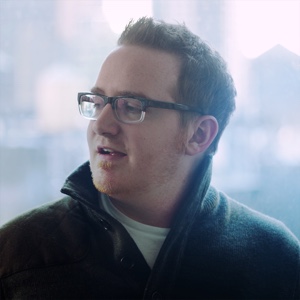 Kirill: Please tell us about yourself and your path so far.
Kirill: Please tell us about yourself and your path so far.
John: I’m John LePore and I’m the creative director at Perception. I’ve been working with Perception since 2006. A lot of people would say that it’s an unusually long time period to be working at one particular studio. At least on our side of the industry people tend to hold a full-time position for around 18 months at a time or so. I’ve had a great time working here since then.
Going all the way back, I’ve studied traditional design in school. I’ve always been fascinated with and really curious about motion graphics. Back then – around 2002 – motion graphics was just about to explode in the industry. I discovered it just as it was beginning to rapidly evolve and change. As soon as I got to it, I instantly knew that it was it, that it was absolutely what I wanted to do. Before that I wondered whether I want to do print design or web design or maybe some stuff that I see on television. Learning about After Effects and motion design in general, seeing studios like MK12 which was the first one I ever came across – just blew my mind.
Since then I’ve worked at a lot of studios, and then found Perception which is, more than anything, a really fun studio to work at. The owners are really nice to work with, giving me an almost terrifying amount of responsibility which I really appreciate. As I was working here there projects shifted and changed.
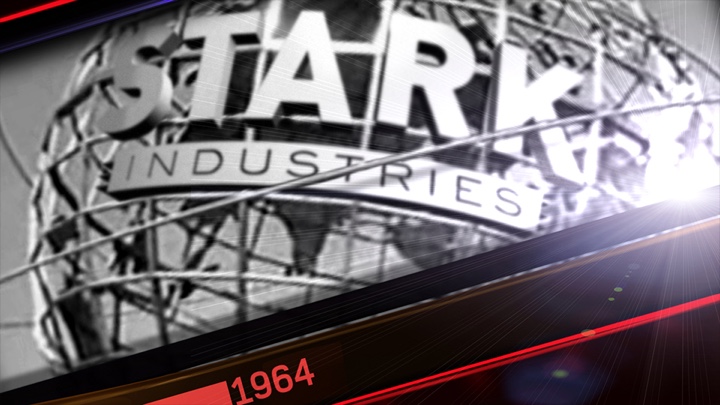
Part of the initial explorations for the Stark Expo keynote sequence in Iron Man 2. Courtesy of Perception.
A huge breakthrough for us was back in 2010 with Iron Man 2. That was our first feature film that we worked on. We had a long-standing relationship with Marvel, mostly helping them with small projects. When Iron Man 2 came along, we were contacted by the Marvel team for a couple of elements. It was a great opportunity, an almost shocking thing to have our first feature film to be a really major one in a popular franchise. It was a really exciting opportunity for us.
We got into interface elements within Iron Man 2, but we didn’t do futuristic interfaces before it. We had done work with an information design angle to it. A key project in my career in that area was in 2007. The network ABC asked us to help them redesign their election graphics coverage. We had upcoming elections of 2008, and they wanted to have a whole graphics package for it that felt really great and innovative. We were figuring out different ways to visualize the data, and I loved it.
I like working with elements in motion graphics that are more graphic design based. I certainly appreciate a lot of things that go into the traditional visual effects, but my heart is always with the traditional graphic design. So a project like this election coverage gave us an opportunity to really dive deeper into things like visualizing information or focusing on legibility that you don’t traditionally get an opportunity to do with motion graphics. Motion graphics is usually about making one specific message really shiny, make it pop off the screen. And that project had more of a cerebral approach to it.
During that project I already started to thing about taking inspiration from the early work by Mark Coleran. I know there were other people working at that time, but he seemed to be the guy who was doing these futuristic interfaces.
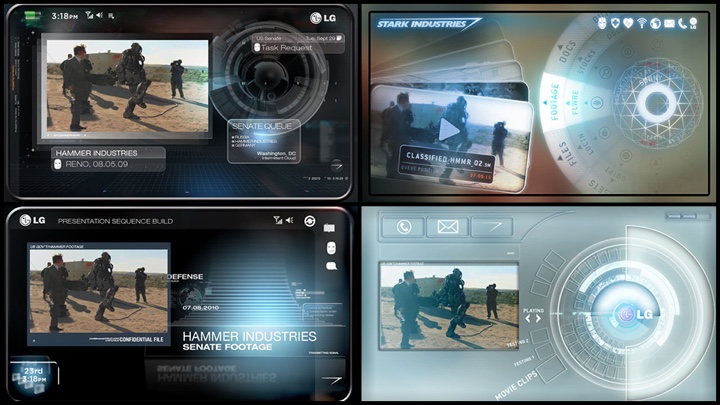
Conceptualizing the Stark Smart Phone in Iron Man 2. Courtesy of Perception.
Kirill: That’s my impression as well that he appeared to be almost the only one doing screen graphics until somewhere around 8-10 years ago.
John: There were a couple of other guys, but it seemed to be that he was the expert, the master, the Yoda of futuristic user interface. I took a lot of inspiration from him. As I and other people at the studio were working on the election project, we were thinking how awesome it would be to make these interfaces for sci-fi films. That was a pretty early goal for us.
So when Iron Man 2 came along, we were tasked with a really simple challenge. In an emergency turnaround they needed on-screen graphics projected for the Stark Expo. They had a massive screen on the stage with Tony Stark standing in front of it presenting. They needed more traditional motion graphics playing in the background on this huge practical screen.
While we were reviewing design concepts for that scene with the team at Marvel, there was one concept that they didn’t ultimately approve. But when they looked at it, we literally heard someone in the background on the conference call saying that this one element reminded him of Tony’s glass phone. And on the other side of the call we were asking if he did just say glass phone with holograms on it. We were really excited at the prospect of that, and they told us not to worry and focus on the Expo screen.
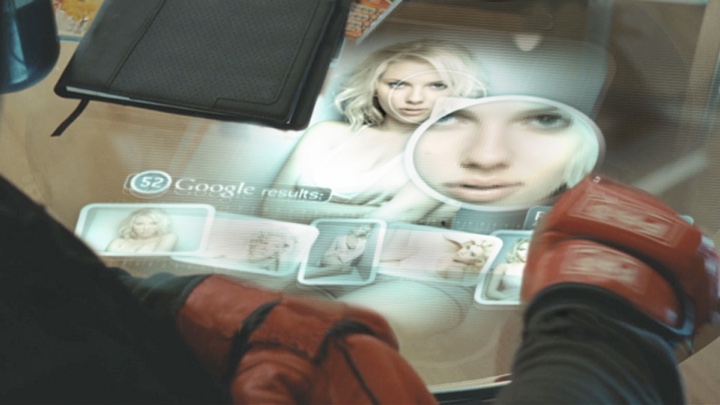
Interface elements for the coffee table in Iron Man 2. Courtesy of Perception.
Continue reading »
His first feature film was the seminal “Sky Captain and the World of Tomorrow”. Later on he was part of the team that won the Oscars for best achievement in visual effects on “Golden Compass” and “Life of Pi”. And just some of his recent work includes “Captain America: The Winter Soldier”, “Fast and Furious 7”, both parts of “The Hunger Games: Mockingjay” and the most recent “Captain America: Civil War”. It gives me great pleasure to welcome Jay Grunfeld to the ongoing series of interviews on fantasy user interfaces.
In this interview Jay talks about his last ten years working primarily as a digital compositor on a variety of productions, the ongoing evolution of tools and artistic capabilities of software tools at his disposal, holographic screens and their applicability in the real world, and his excitement about the virtual reality revolution. We also talk about his work as the visual effects supervisor on “Mockingjay”, its technology, screen and holographic projections.
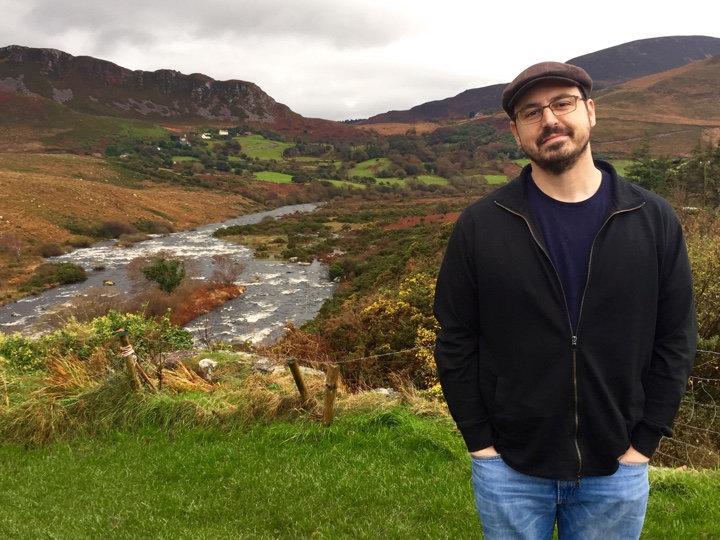
Kirill: Please tell us about yourself and your professional path so far.
Jay: My name is Jay Grunfeld and I work as a visual effects compositor/supervisor. I was born in Brooklyn, New York and was raised in New City, NY, a suburb of NYC in the Hudson Valley. Growing up, art and talent surrounded me. My parents knew early on that I had an eye and encouraged me to take courses at the Arts Students League and the School of Visual Arts for high school students, in addition to providing me with private lessons as well. My greatest influence is my dad, a graphic designer and a graduate of Art Center here in LA. We worked on a bunch of projects together and he was always encouraging me to try everything and anything because it always leads to something.
I went on to study photography at Cal Arts. The idea of capturing a moment in time within a frame always intrigued me but now, I create instead of capture. Unfortunately, Cal Arts suffered terrible damage due to the Northridge quake of ’94, so I spent the next six months in NY and began learning Photoshop.
After college I became interested in motion graphics. One of my early jobs was at The Picture Mill. This is where Stephen Lawes and I first met. Stephen would later hire me for my first job as a compositor on “Sky Captain and the World of Tomorrow.” “Sky Captain” was a truly innovative film as a good portion of it was computer generated. It was a feeling of freedom with an entire large canvas to create. It was on this film that I knew I had found the work I wanted to pursue.
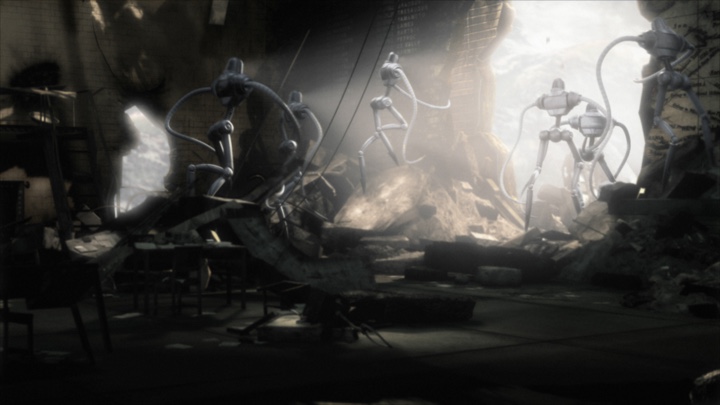
Scene from “Sky Captain and the World of Tomorrow”. Courtesy of Jay Grunfeld.
I spent the next few years working at Entity FX as a compositor, which led to Rhythm & Hues where I was part of the creative team that earned Oscars for “The Golden Compass” and “Life of Pi.” I am incredibly proud to have been a part of these films. You could say I earned my masters in compositing at R&H.
Presently, I am working at Cantina Creative. Stephen Lawes and Sean Cushing, co-owners of Cantina, have created a special, supportive environment in which to work. They both encouraged me to try my hand at supervising, which is very challenging and fulfilling. Wearing a different hat within the process I thought I knew so well was humbling.
Kirill: What drew you into the movie industry? If you go back to the time when you just started on your first feature film productions and some of the expectations that you had, how close (or far) has the reality of working in the industry turned out to be?
Jay: I never imagined working on feature films so I really had no expectations. I was always leaning towards fine arts/photography. After my experience with “Sky Captain,” I fell in love with VFX. It is extremely challenging but so rewarding. I knew then I wanted to spend my days in VFX. It’s really about the team aspect of working with different types of artists, each with their own specialty, putting their collective talents together for the same purpose.
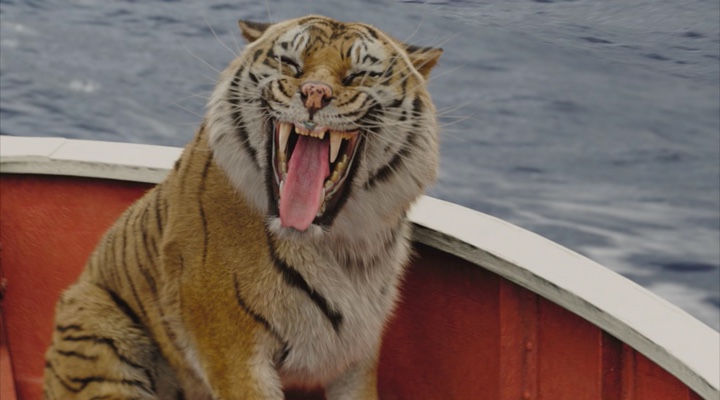
Tiger smile from “Life of Pi”. Courtesy of Jay Grunfeld.
Continue reading »
![]()
![]() I then was asked to work at a company in Pinewood Studios designing computer graphics for film sets. My first feature was the first “Tomb Raider” film where I was asked to design the POV shots for the robot fight scenes in the opening of the film and then the title sequence, which was really exciting for me back then. I remember waiting 15 minutes for my G4 to update each frame in AE. I stayed on working full time in Pinewood for the following 2/3 years at Useful Companies working on most of the action films that came into Pinewood and Shepperton studios like “The Bourne Supremacy”, “Spy Games”, “Thunderbirds”, “Terminator 3” and others, designing UI graphics, shooting onset video and doing live playback.
I then was asked to work at a company in Pinewood Studios designing computer graphics for film sets. My first feature was the first “Tomb Raider” film where I was asked to design the POV shots for the robot fight scenes in the opening of the film and then the title sequence, which was really exciting for me back then. I remember waiting 15 minutes for my G4 to update each frame in AE. I stayed on working full time in Pinewood for the following 2/3 years at Useful Companies working on most of the action films that came into Pinewood and Shepperton studios like “The Bourne Supremacy”, “Spy Games”, “Thunderbirds”, “Terminator 3” and others, designing UI graphics, shooting onset video and doing live playback.![]()
![]()